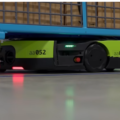The field of rehabilitation is undergoing a revolution with the increasing use of robots. These innovative technologies are not here to replace therapists, but rather to work alongside them, providing new tools and approaches to improve patient care. Here are five key ways rehabilitation robots are enhancing patient care:
1. Increased Intensity and Repetitive Therapy: Rehabilitation often involves repetitive exercises to rebuild strength and improve motor skills. Robots can provide tireless assistance, allowing patients to engage in longer and more intensive therapy sessions than might be possible with a human therapist alone. This repetitive practice is crucial for strengthening muscles and retraining neural pathways.
2. Personalized Rehabilitation Programs: Some rehabilitation robots can be programmed to adapt to a patient’s specific needs and progress. Sensors and software can track movements and adjust the level of assistance or resistance provided by the robot, ensuring the therapy is both challenging and achievable for the individual.
3. Improved Motivation and Engagement: Rehabilitation exercises can sometimes be tedious, leading to patient frustration. Robotic therapy can introduce an element of fun and gamification, with visual feedback and interactive exercises that keep patients motivated and engaged throughout their therapy sessions.
4. Enhanced Data Collection and Analysis: Rehabilitation robots can collect valuable data on a patient’s progress, including range of motion, strength, and coordination. This data can be analyzed by therapists to monitor progress, identify areas needing improvement, and tailor the therapy program accordingly.
5. Providing Support and Assistance in Home Settings: Traditional rehabilitation often requires frequent visits to a physical therapy clinic. Newer rehabilitation robots are becoming more compact and user-friendly, making it possible for patients to utilize them in their homes for continued therapy and practice. This allows for greater independence and potentially faster recovery times.
The Future of Rehabilitation Robotics:
Rehabilitation robotics is a rapidly evolving field with the potential to further revolutionize patient care. Future advancements may include:
- Integration of Artificial Intelligence (AI): AI could personalize therapy programs even further, adapting to a patient’s progress in real-time and offering personalized feedback.
- Advanced Virtual Reality (VR) Integration: VR experiences could be combined with robotic therapy to create immersive and engaging environments for rehabilitation exercises.
- Development of More Affordable and Accessible Robots: Making rehabilitation robots more affordable and user-friendly would allow for wider adoption and access to this technology for a greater number of patients.
Conclusion:
Rehabilitation robots are a valuable tool that complements the expertise of human therapists. By offering increased intensity, personalized programs, and improved data collection, these robots are leading to enhanced patient care, improved recovery outcomes, and a brighter future for the field of rehabilitation.









